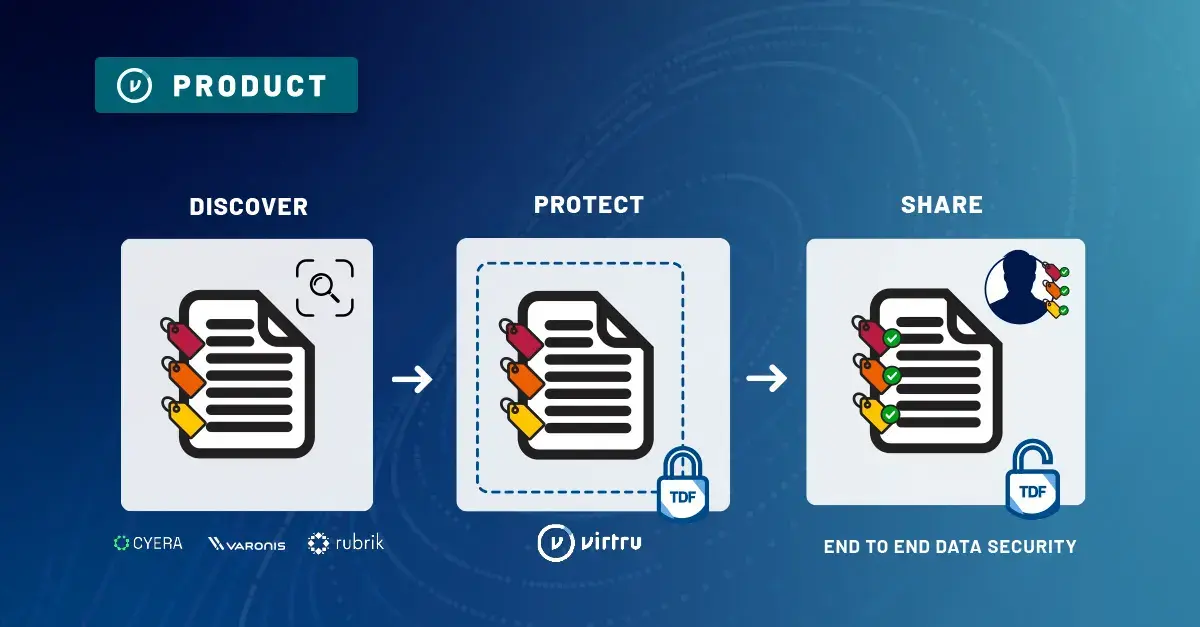

Sign Up for the Virtru Newsletter
See Virtru In Action


Using strong encryption to protect the sensitive data contained in emails, files, and SaaS apps is one of the most important steps you can take toward living a more secure, private digital life, but is all encryption created equal?
Encryption is always a good measure against snooping or hacking, but client-side encryption is the gold standard for making sure your data or email only reaches the intended recipient.
But what, exactly, is client-side encryption, and why is it so much more secure? To understand that, it’s important to understand how encryption in general works to protect your sensitive data.
Encryption is simply the process of encoding data so that only those with authorized access can read it. Let’s say you use encryption to secure your email messages and attachments. If an intruder somehow hacks into your email server and retrieves those messages, that thief would end up with nothing but pages of gibberish. In order to decode an encrypted email, document, server or other device, you need to have the key.
To make this happen, machines need to have conversations. If, for example, you’re using an encrypted connection to purchase something online (look for the “s” in “https”), your computer sends a packet of data to the server it’s connected to, which then replies with a certificate containing its encrypted signature and a public key, enabling you to encrypt data you send to the server. In essence, the server is verifying its identity to your computer, so that you know that recipient of your encrypted credit card data is legitimate, and not an impostor.
The nitty-gritty of how encryption works depends on a few factors, including what kinds of conversations are transponding between machines, how many keys are involved and whether you’re using client-side encryption.
The problem with many encryption solutions, such as some TLS-based healthcare portals, is that while they do encrypt your data, they can’t guarantee that your data is being transmitted between servers securely. While your data might be secure when it leaves your computer, there’s no guarantee that it will remain that way on its journey to the intended recipient’s computer.
When you send a message over the Internet, that data isn’t just going directly to the recipient. Your message is traveling through — and in some cases, staying on — many different servers. While you might like to believe all of those servers are secure, there’s a good chance that they aren’t. Even worse, it’s entirely possible for one of those servers to be monitoring every message that it comes across.
Client-side encryption solves this problem by ensuring your message remains encrypted from the time you send it to the time it is received. Any servers it touches on the way to its destination won’t be able to read it, as they will have no way to decrypt it — only the intended recipient will be able to use their key to decrypt your message.
If you’re looking for the most secure, private way to send email or transmit data, client-side encryption is your best bet. Using client-side email encryption makes it less likely for your information to be intercepted by hostile third parties on the Internet.
Think of it as a language that you make up with a friend: while you might drop messages in that language in each other’s mailbox, nobody else will be able to intercept and understand that message. Without client-side encryption, you’d have to create a dictionary explaining the language and trust it with a third party.
While Pretty Good Privacy (PGP) has offered client-side encryption for decades, it’s too complicated for most users, and has flaws of its own. It’s a very secure program, but it’s also a pain to use, particularly if you’re not already a tech genius. To send someone an encrypted email message using PGP client-side encryption, you must first ensure that they’re also using PGP, and then exchange keys with them. Once you’ve collected keys from everyone with whom you send and receive secure email, you’re on the hook for managing those keys. All it takes is an accidental disk wipe to force you to begin the arduous process all over again.
For client-side encryption to catch on, it has to be less complicated than that. And with Virtru, it is.
Unlike with PGP, client- side email encryption with Virtru requires no key management on the part of the user. In fact, you can enjoy the added security and privacy of client-side encryption simply by downloading a free browser add-on and then hitting a switch.
In order to read the encrypted email you send, your recipients have to verify their identity, and then simply open and read the secure message. It’s the perfect turnkey client-side encryption solution for both casual users and tech aficionados, and at no point can Virtru intercept those messages. Your conversations stay between you and your recipient.
Virtru is also a leading Google key management partner for Google Workspace CSE. But unlike other partners, Virtru enables you to encrypt your data and also apply automatic access controls based on your custom labels, ensuring your data remains protected against unauthorized access, regardless of its location within your system.

The editorial team consists of Virtru brand experts, content editors, and vetted field authorities. We ensure quality, accuracy, and integrity through robust editorial oversight, review, and optimization of content from trusted sources, including use of generative AI tools.
View more posts by Editorial TeamSee Virtru In Action
Sign Up for the Virtru Newsletter











Contact us to learn more about our partnership opportunities.